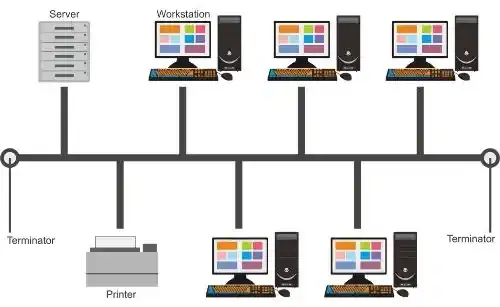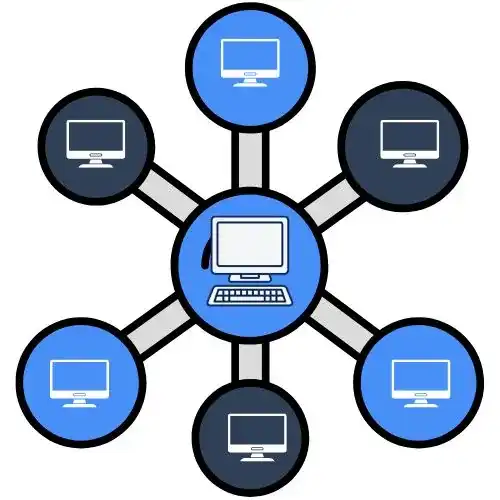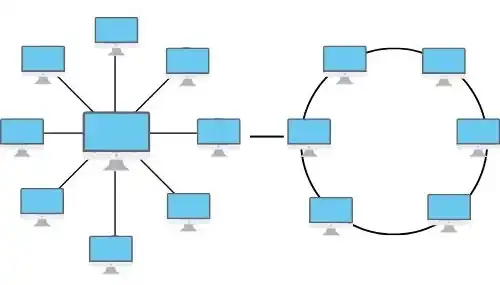Computer networks are essential infrastructure in today’s digital age, enabling seamless communication, resource sharing, and collaboration among connected devices.
Understanding the functions they provide and the different network topologies available is crucial for designing and maintaining efficient and reliable networks.
Some of the key functions provided by computer networks include:
Functions Provided by Computer Networks
Computer networks serve a variety of functions that facilitate communication, resource sharing, and collaboration among connected devices.
Communication
Computer networks facilitate communication by allowing devices to exchange data and information. Whether it’s sending emails, sharing files, or engaging in video conferencing, networks provide the underlying framework for communication.
Resource Sharing
Networks enable the sharing of hardware resources such as printers, scanners, and storage devices. This allows multiple users to access and utilize these resources efficiently, reducing costs and improving productivity.
Data Sharing
Networks provide a platform for seamless access to files, databases, and applications across connected devices. Users can collaborate on documents, access shared databases, and work on projects together, regardless of their physical location.
Internet Access
Networks connect devices to the internet, providing access to a vast array of online services, resources, and information. From browsing the web to accessing cloud-based applications, internet connectivity is a fundamental function of computer networks.
Remote Access
Networks enable remote access to resources and systems, allowing users to connect to their work or home networks from anywhere with an internet connection. This flexibility enhances productivity and enables remote work scenarios.
Centralized Management
Networks allow for centralized management of resources, users, and security policies. IT administrators can configure network settings, monitor performance, and enforce security measures from a central location, simplifying network administration and maintenance.
Backup and Recovery
Networks facilitate backup and recovery processes by enabling centralized storage of data backups. In the event of data loss or system failure, administrators can restore data from backups stored on network-attached storage devices, ensuring data integrity and continuity of operations.
Types of Network Topologies
Network topology refers to the physical or logical layout of interconnected devices in a computer network.
Different network topologies provide unique ways to organize and structure the connections between devices. Understanding network topologies is essential for designing, implementing, and managing efficient and reliable networks.
Now, let’s delve into each type of network topology, discussing their characteristics, advantages, and disadvantages.
Bus Topology

In a bus topology, all devices are connected to a single communication line, called a bus. Data is transmitted along the bus, and each device receives all transmissions but only processes those intended for it. It’s a simple and inexpensive topology but can suffer from performance degradation and network failures if the main bus encounters issues.
- Advantages of Bus Topology:
- Simple and easy to set up, making it suitable for small networks.
- Requires less cabling compared to other topologies, reducing costs.
- Cost-effective for small-scale deployments.
- Disadvantages of Bus Topology:
- Limited scalability, as adding more devices can degrade performance.
- Susceptible to cable failures, which can disrupt communication.
- Performance may degrade as more devices are added to the network.
Star Topology

In a star topology, each device is connected directly to a central hub or switch. All data transmissions pass through the hub, which manages the traffic flow. This topology offers better performance and scalability compared to the bus topology, as individual connections can be managed independently. However, it relies heavily on the central hub, and if it fails, the entire network may become inaccessible.
- Advantages of Star Topology:
- Centralized management and control, with a central hub or switch managing network traffic.
- Easy to add or remove devices without disrupting the entire network.
- Fault tolerance for individual device failures, as they do not affect other devices.
- Disadvantages of Star Topology:
- Dependency on the central hub or switch; failure can disrupt the entire network.
- Requires more cabling compared to bus topology, increasing initial setup costs.
- Higher initial setup cost compared to bus topology.
Ring Topology

In a ring topology, each device is connected to two other devices, forming a closed loop. Data travels around the ring from one device to the next until it reaches its destination. Ring topologies offer better performance than bus topologies but are less common due to their susceptibility to network failures—if one device or connection fails, the entire network can be disrupted.
- Advantages of Ring Topology:
- Efficient data flow in one direction, reducing collisions and improving performance.
- Simple installation without the need for a central hub or switch.
- No single point of failure; failure of one device does not disrupt the entire network.
- Disadvantages of Ring Topology:
- Vulnerable to cable or device failures, which can disrupt communication.
- Troubleshooting can be complex if a failure occurs, as the entire ring needs to be examined.
- Limited scalability due to the need for continuous physical connections.
Mesh Topology

In a mesh topology, every device is connected to every other device in the network, creating multiple paths for data to travel. This redundancy improves fault tolerance and ensures that if one path fails, data can still reach its destination via an alternate route. Mesh topologies offer high reliability but are expensive to implement and maintain due to the large number of connections required.
- Advantages of Mesh Topology:
- High reliability due to redundant paths, ensuring continuous connectivity even if one path fails.
- Fault tolerance against link failures, as data can reroute through alternate paths.
- Supports heavy data traffic and large-scale networks effectively.
- Disadvantages of Mesh Topology:
- Expensive to implement and maintain due to the high number of connections required.
- Complex design and management, requiring careful planning and configuration.
- High cabling requirements increase installation and maintenance costs.
Hybrid Topology

A hybrid topology combines two or more basic topologies (such as star-bus, star-ring, or star-mesh) to form a more complex network structure. This allows organizations to tailor their network design to meet specific requirements, such as balancing cost-effectiveness with performance and reliability. Hybrid topologies are commonly used in large-scale enterprise networks.
- Advantages of Hybrid Topology:
- Offers flexibility to tailor the network to specific needs by combining different topologies.
- Balances cost-effectiveness with performance, allowing organizations to optimize their network design.
- Supports diverse requirements of large-scale networks, accommodating various connectivity needs.
- Disadvantages of Hybrid Topology:
- Complex design and management, requiring expertise to integrate multiple topologies effectively.
- Higher initial setup and maintenance costs compared to single-topology networks.
- Requires careful planning to ensure seamless integration and optimal performance.
Understanding the various types of network topologies is crucial for designing, implementing, and managing computer networks effectively.
Each topology offers unique advantages and disadvantages, making them suitable for different scenarios and requirements.
By selecting the appropriate topology and considering factors such as scalability, fault tolerance, and cost, organizations can build robust and efficient networks to meet their specific needs and objectives.



